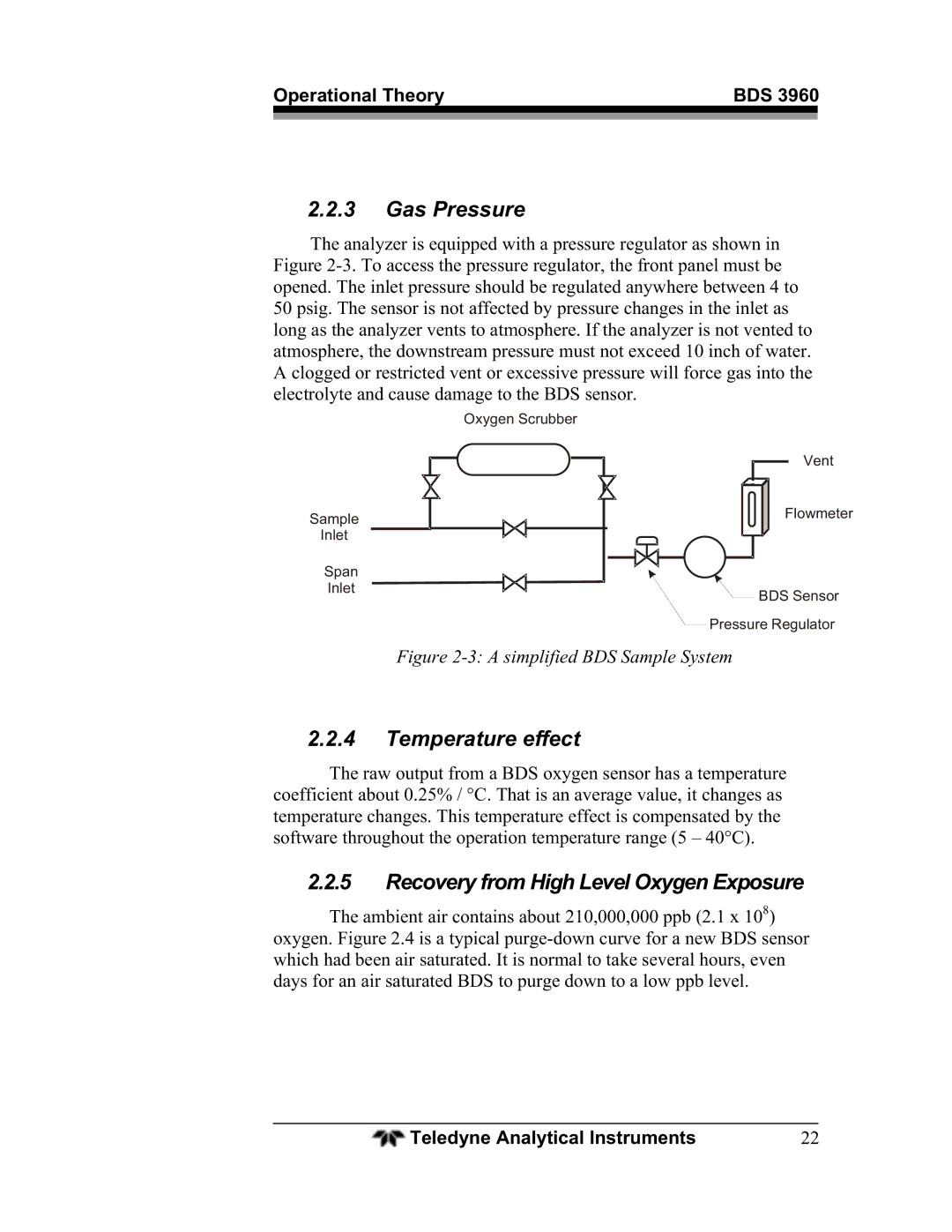
Operational Theory | BDS 3960 | |
|
|
|
|
|
|
2.2.3Gas Pressure
The analyzer is equipped with a pressure regulator as shown in Figure
| Oxygen Scrubber | ||||||||||
|
|
|
|
|
|
|
|
|
|
| Vent |
Sample |
|
|
|
|
|
|
|
|
|
| Flowmeter |
|
|
|
|
|
|
|
|
|
| ||
|
|
|
|
|
|
|
|
|
| ||
|
|
|
|
|
|
|
|
|
|
| |
Inlet |
|
|
|
|
|
|
|
|
|
|
|
|
|
|
|
|
|
|
|
|
|
| |
Span |
|
|
|
|
|
|
|
|
|
|
|
|
|
|
|
|
|
|
|
|
|
| |
|
|
|
|
|
|
|
|
|
|
| |
Inlet |
|
|
|
|
|
|
|
|
| BDS Sensor | |
|
|
|
|
|
|
|
|
|
| ||
|
|
|
|
| Pressure Regulator | ||||||
|
|
|
|
| |||||||
Figure 2-3: A simplified BDS Sample System
2.2.4Temperature effect
The raw output from a BDS oxygen sensor has a temperature coefficient about 0.25% / °C. That is an average value, it changes as temperature changes. This temperature effect is compensated by the software throughout the operation temperature range (5 – 40°C).
2.2.5Recovery from High Level Oxygen Exposure
The ambient air contains about 210,000,000 ppb (2.1 x 108) oxygen. Figure 2.4 is a typical
Teledyne Analytical Instruments | 22 |
